The island chain of the Florida Keys is a spectacular, family-friendly tropical playground with many things to see and do that are not found anywhere else.
Five regions, connected by the Overseas Highway’s 42 bridges, make up the Florida Keys. Each has a unique appeal with distinctive attractions and experiences.
Key Largo
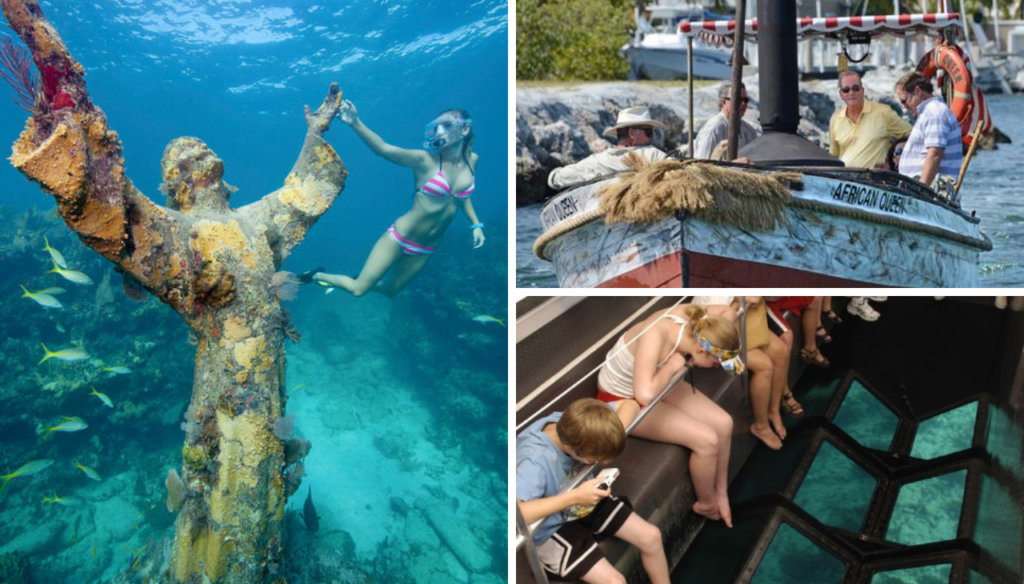
Key Largo is the northernmost key and longest island, only an hour’s drive from South Florida’s two major airports, Miami and Fort Lauderdale. It is known as the “Diving Capital of the World” because of the iconic dive and snorkel sites including the nine-foot tall Christ of the Deep Statue, reefs, and an impressive collection of shipwrecks nearby.
The John Pennekamp Coral Reef State Park was the first undersea preserve in the U.S. Along with the adjacent Florida Keys National Marine Sanctuary, it protects North America’s only living coral barrier reef. Snorkelers and divers get a close up of marine life as they swim over the extensive shallow reefs. You can also view the reef from a glass bottom boat without getting wet.
Another one-of-a-kind boating experience in Key Largo is taking a canal or dinner cruise aboard the restored century-old steam-powered vessel that Humphrey Bogart captained in the 1951 film “The African Queen.”
Have you ever floated on a giant lily pad? Aqua Fun Adventures’ pontoon boat has a water slide on the stern and a floating “lily pad” in the water. Standard excursions include sunset cruises and barhopping by boat. Custom options include delivering you to a sandbar, watching manatees, or having pizza delivered on the water.
Islamorada
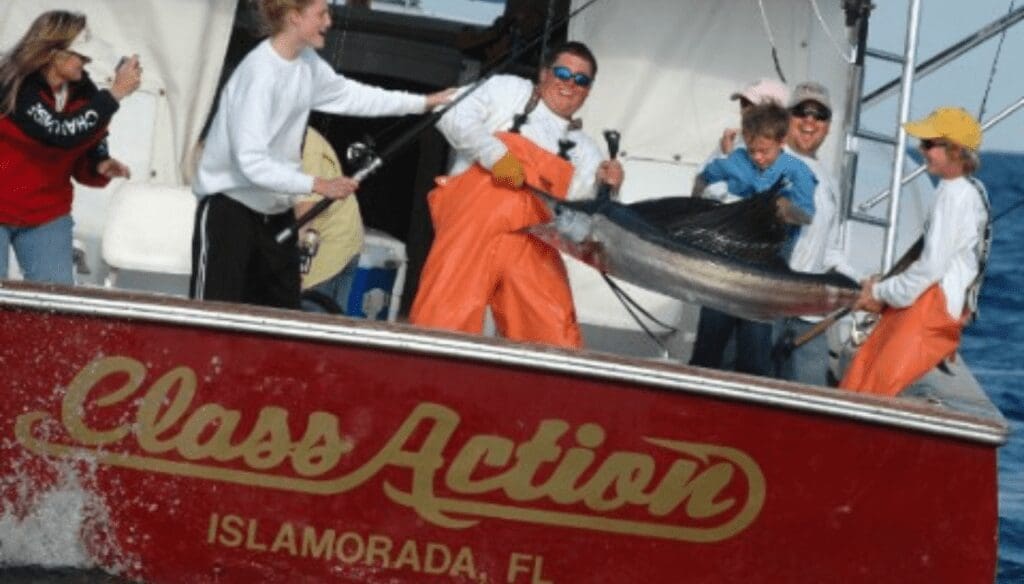
Islamorada consists of six islands: Plantation Key, Windley Key, Upper Matecumbe Key, Lower Matecumbe Key, and the offshore islands of Indian Key and Lignumvitae Key. In this “Sportfishing Capital of the World” sport fishermen will find professional charter boats with highly skilled captains and guides. Saltwater fly fishing in the backcountry shallows is also epic recreation here.
Impressive fishing naturally delivers fresh-off-the-boat cuisine. Plenty of casual dockside fish houses and gourmet beachfront cafes ensure your taste of the Keys is delicious. Art lovers will enjoy the vibrant arts culture on the Art Walk in the lively Morada Way Arts & Cultural District every third Thursday.
Marathon
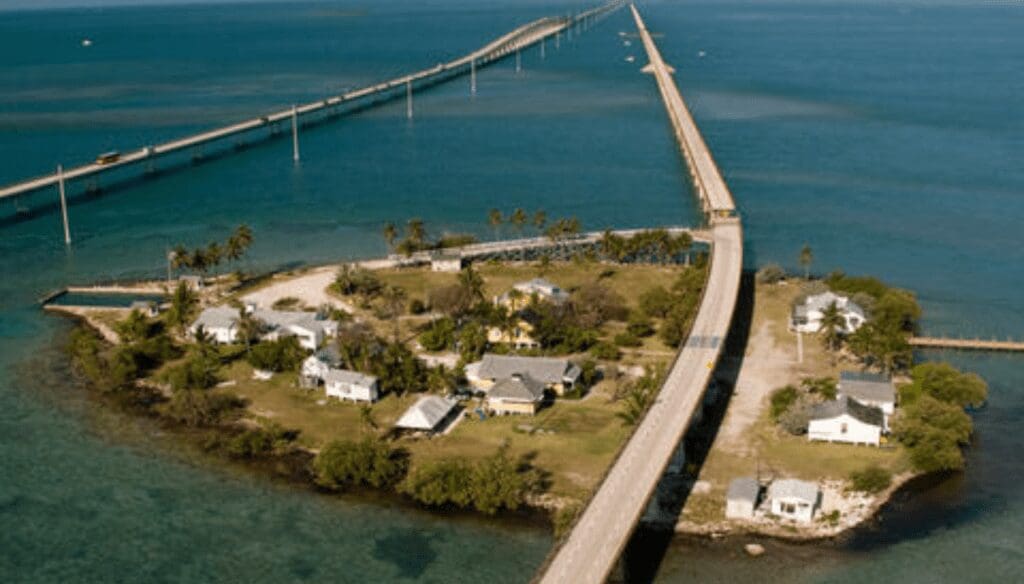
Photo by Andy Newman/Florida Keys News Bureau
Marathon is an area that honors its fishing and seafaring traditions. It offers the most mooring, dockage, and marine facilities in the Florida Keys for those who arrive by boat. Families and snowbirds from colder climates also flock to private vacation homes and family-friendly beach resorts. Marathon has an airport for private planes and corporate jets, serviced by shuttles, taxis, and car rentals.
In the early 20th century, there was no land connectivity through the Florida Keys. East coast railroad magnate, Henry Flagler, was determined to extend his railroad from Miami to Key West, no matter the cost. In 1912, Flagler’s Overseas Railroad opened, albeit at a great financial loss. In 1935, a hurricane ripped out miles of track, including parts of the famous seven-mile bridge. Flagler’s bankrupt company eventually sold the right-of-way to the state. Florida converted the railroad to an automotive bridge which opened in 1938. For 44 years, the very narrow two-lane bridge was the only automotive route to Key West. In 1982, a new parallel bridge opened for cars. Recently, 2.2 miles of “Old Seven” reopened to pedestrians and bicyclists. Learn more about the history of the failed railroad and access the old bridge at the Pigeon Key Visitors Center at mile marker (MM) 47.5.
Two marine-based educational programs are based in Marathon. The Turtle Hospital is the world’s first licensed veterinary rescue and rehab facility for injured sea turtles. Marathon is also home to the non-profit Dolphin Research Center where you can learn about and have interactions with dolphins and sea lions. The Florida Keys Aquarium is a 200,000-gallon saltwater aquarium where you can touch, feel, and feed fish, stingrays, and sharks.
Big Pine Key and Florida’s Lower Keys
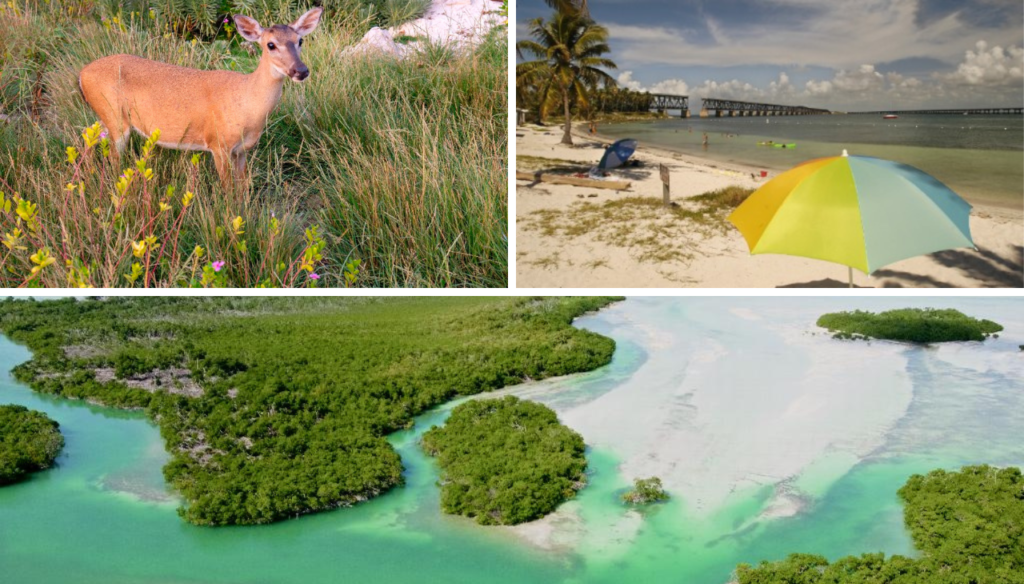
A string of small islands runs from the west end of the Seven Mile Bridge, MM 40 to MM 5. It’s a quiet area sprinkled with campgrounds, RV parks, and small B&Bs. The focus is on the native wilderness with two national wildlife refuges, a state park, and the National Marine Sanctuary.
Quiet beaches pepper the Lower Keys. At MM 37, Bahia Honda State Park and Recreation Area has two beautiful sandy beaches perfect for beachcombing. A snack bar (with Wi-Fi), gift shop, kayak rentals, and snorkeling tours make it family-friendly.
On Big Pine Key, stop in the Visitor’s Center of the National Key Deer Refuge then hike the marked trails through undeveloped pinelands to spot the endangered Key Deer. They are the smallest deer in the world, about the size of a medium dog. Their population was down to only about 50 in 1957 but has rebounded in number to nearly 1,000.
Key West
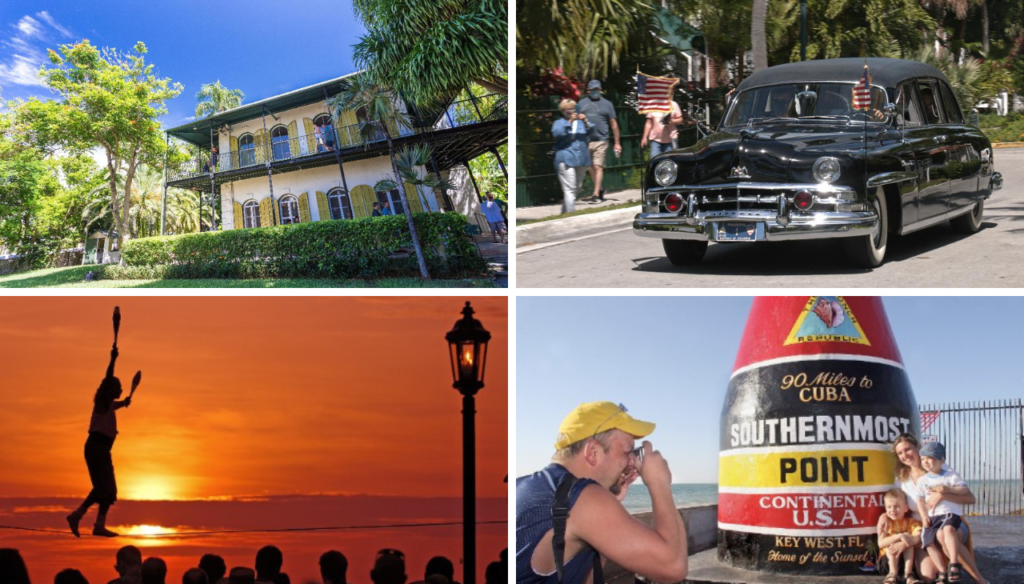
The far end of the Florida Keys is an amalgamation of storybook architecture and natural beauty. It specializes in romantic sunsets, open-air bars and cafes, and a relaxed pace. Time and proximity to Cuba and other Caribbean islands have developed a rich cultural diversity and a rather eccentric, anything-goes attitude. Many renowned writers have found inspiration in the island paradise of Key West, including Ernest Hemingway, Tennessee Williams, Robert Frost, Shel Silverstein, and Elizabeth Bishop.
There’s plenty to see and do in Key West. Tour Harry Truman’s Little White House Museum and Hemingway’s home. Visit the Mel Fisher Maritime Museum to see the booty he recovered from the Spanish galleon Nuestra Senora de Atocha. The Key West Cemetery with its many quirky headstone inscriptions is a must-do. At the Key West Butterfly and Nature Conservatory, stroll among 50-60 freely fluttering butterflies and enjoy a flamingo encounter with the celebrity residents, Rhett and Scarlett.
Arguably Key West’s best-known tradition is the famous Sunset Celebration on Mallory Square. Each evening crowds gather to watch the sight, while artisans peddle their handicrafts and buskers perform. And you can’t leave without visiting the Southernmost Point in the U.S. and snapping the requisite selfie.
Driving the entire length of the Florida Keys from Miami to Key West takes about three and a half hours. You can fly commercially into Key West, but you’d miss out on the incredible natural beauty and all these unique things to see and do along the way. It’s definitely a drive worth doing. When you’re ready, let Covington help you plan your trip.






Leave a Reply